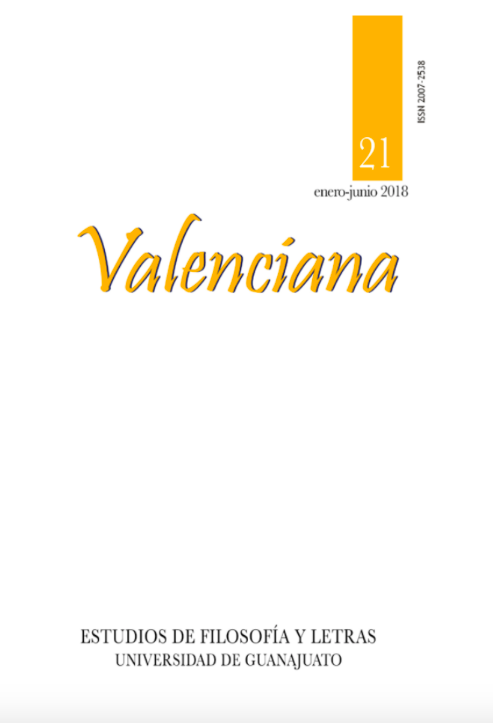Hermeneutics and Ontology: the subject and the truth or self care and parrhesia
DOI:
https://doi.org/10.15174/rv.v0i21.337Abstract
The questions on which we are going to devote this reflection came from Michel Foucault. The relation between the concept of “subject” and that of “truth” is not simple a relation of contraposition, but there is a mutual interference at play. The hermeneutic exercise will bring us closer to the understanding of the words that are here in question. We propose to dialogue with the writings of Foucault, specifically with the problematization of the question in which history engages the relations between the elements of the subject and of the truth, top of the ontology, which is reached and demolished by the new subjects and the new truths, that is, by the new ways of being and our ways relations. Truth is concretely, history of truth. The history of being is a history of subjectivation, the history of discourse about subjectivation, the history of the “said” of and about the subject. The hermeneutics will show that the constitution of self and sense correspond in different epochs. Foucault’s commitment to combine the two concepts starts from the idea that truth is not accuracy and that it is precisely for this reason that truth does not need the tinsel of rhetoric, as Socrates said, to tell the truth little eloquence suffices. The relationship between truth and one’s own life style, or between truth and ethics and an aesthetic of itself, is for Foucault, very palpable in the Socratic-Platonic tradition. Foucault sees in Parrhesia a political mechanism of great interest from an ethical perspective, and strives to traverse with great thoroughness the whole history of the term populated by semantic variations. Parrhesia is for a long time the nexus of union between self care and caring for others, between self-government and the government of others, the border on which ethics and politics coincide.References
Bibliografía
Deleuze, Gilles. 2007. Empirismo y subjetividad: las bases filosóficas del anti-Edipo, Gedisa. Barcelona, 2007
Foucault, Michel. 2001. La Hermenéutica del sujeto. Akal. Madrid.
Foucault, Michel. 1993. “¿Qué es la Ilustración?”, en Daimón, Revista de filosofía, no 7, 5-18. Secretariado de investigaciones e intercambio científico. Universidad de Murcia. Murcia.
______________. 2004. Discurso y Verdad en la antigua Grecia. Paidós, Barcelona.
______________. 1997. Historia de la sexualidad, vol. 1: La voluntad de saber, Siglo XXI. México.
______________. 1993. Historia de la Sexualidad, 1993. Vol. 2: El uso de los placeres, Siglo XXI. Madrid.
______________. 1994. Un diálogo sobre el poder. Altaya. Madrid.
______________. 1970. Nietzsche, Freud, Marx, Coloquio de julio de 1964 (Cahiers de Royaumont, Philosophie 7, Minuit, Paris, 1967). Anagrama. Barcelona.
Gadamer, Hans-Georg. 1990. “Sobre los que enseñan y los que aprenden” en La herencia de Europa. Península, Madrid.
__________________. 2006. Estética y hermenéutica. Introducción de Ángel Gabilondo. Traducción de Antonio Gómez Ramos. Tecnos/Alianza, Madrid.
García Gual C., Martínez Hernández M., Lledo Iñigo E. 1988. Platón: Diálogos III. Editorial Gredos. Versión digital. Pp. 185-287
García Gual C., 2003. Platón. El Banquete. Madrid. Alianza editorial. Versión física.
Hegel, G.W.F. 1994. Fenomenología del Espíritu. Traducción por Wenceslao Rosas. F.C.E. México.
Heidegger, Martin. 2002. Ser y Tiempo. Traducción Jorge Eduardo Rivera. Trotta Madrid, 2002.
Lledó Iñigo Emilio, 1981. Platón, Diálogos I. Apología, Laques.
Miguez José Antonio, 1961. Platón. Alcibíades o de la naturaleza. Aguilar, Buenos Aires.
Ioannes Burnet, 1941. Platonis Opera. Tomos II. Tetralogía IV (ALCIBIADES I y II). Scriptorum classicorum Bibliotheca Oxoniensis.
Ricoeur, Paul. 1999. "¿Qué es un texto?" en Historia y narratividad. Paidós, Barcelona.
Cibergrafía
Ortega y Gasset, José. 1998. “Filosofía y Verdad”, En: Chamizo Domínguez, Pedro José. 1998. Repertorio de Ensayistas y filósofos, en http://www.ensayistas.org/filosofos/spain/ortega/. Universidad de Málaga. Málaga. ISBN 0-9763880-1-4
Published
How to Cite
Issue
Section
License
Author(s) who publish in this journal do accept the next conditions:
According to copyright regulations, Valenciana does recognize and respect the authors’ moral right, as well as the right of property, which will be assigned to the journal for its diffusion in open access.
Valenciana does not charge authors for the submission, editorial process or publication in the journal.
All texts published and distributed by Valenciana (without exception) are supported by the license Creative Commons Attribution-NonCommercial 4.0 International (CC BY-NC 4.0), which allows third parties to use the publication as long as they mention the author and the first publication.
Authors can make other independent and additional contractual agreements for the non-exclusive use of his article published in Valenciana (e.g. including it in an institutional repository or in printed/electronic media), as long as it is explicitly clarified that the article was published for the first time in this journal.
For these purposes, authors must sign and send the letter of submission and copyright transfer form in a PDF file to this email address: revistavalenciana@gmail.com
This journal is under a license by Creative Commons Atribución-NoComercial-SinDerivadas 4.0 Internacional (CC BY-NC-ND 4.0)).













